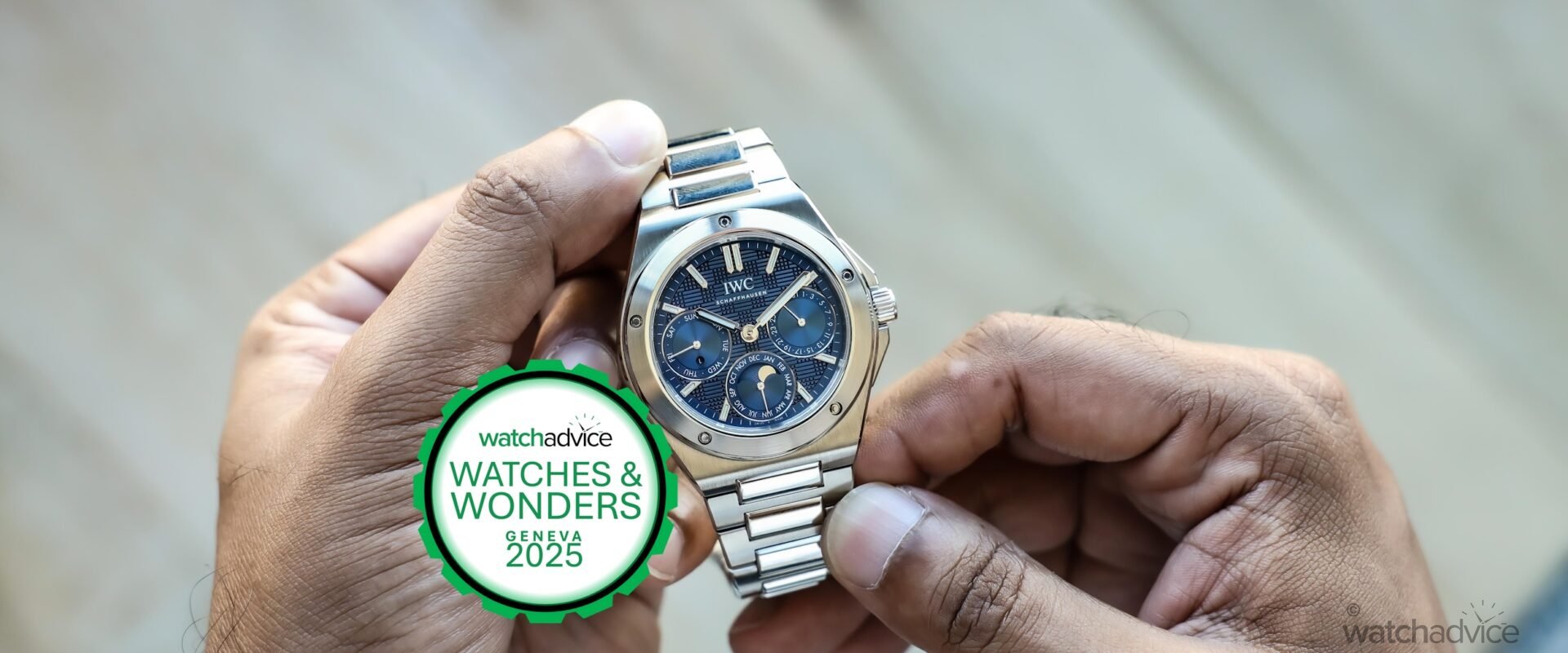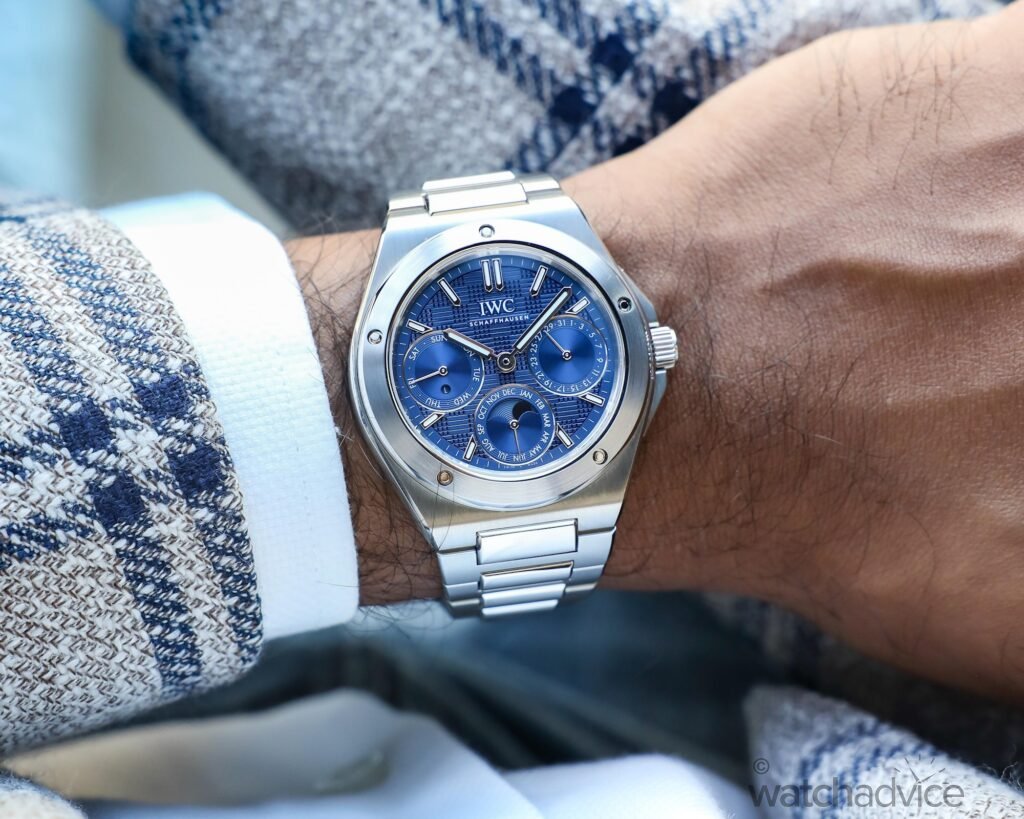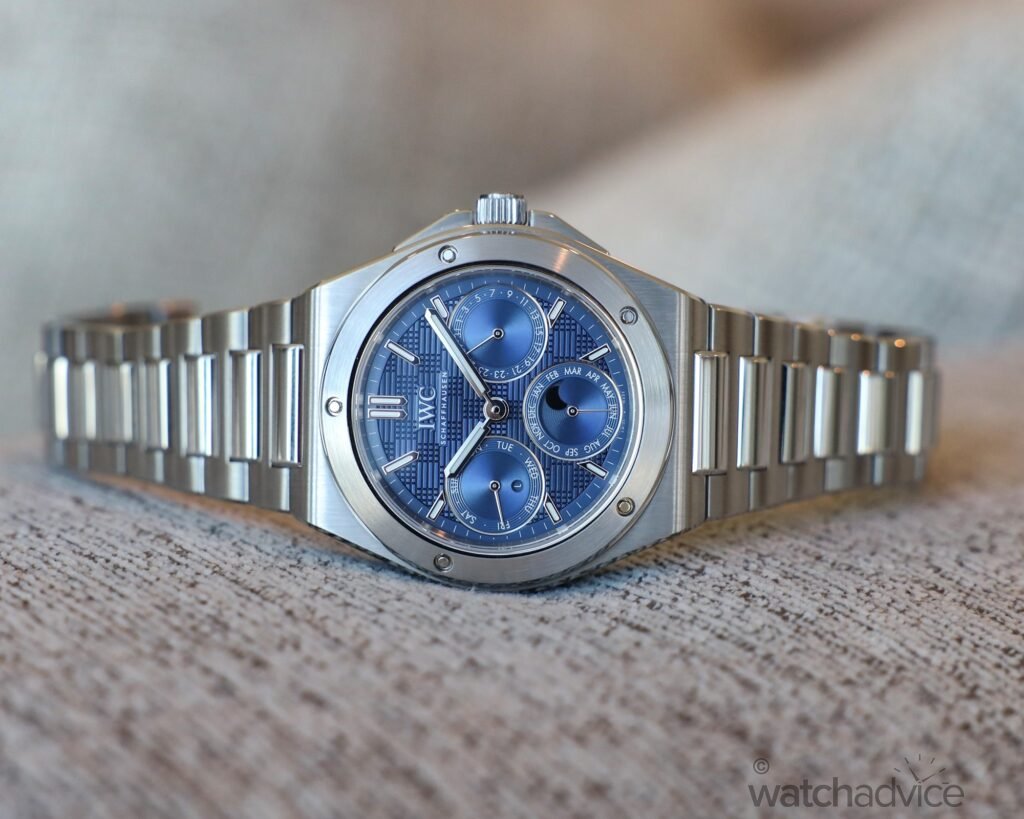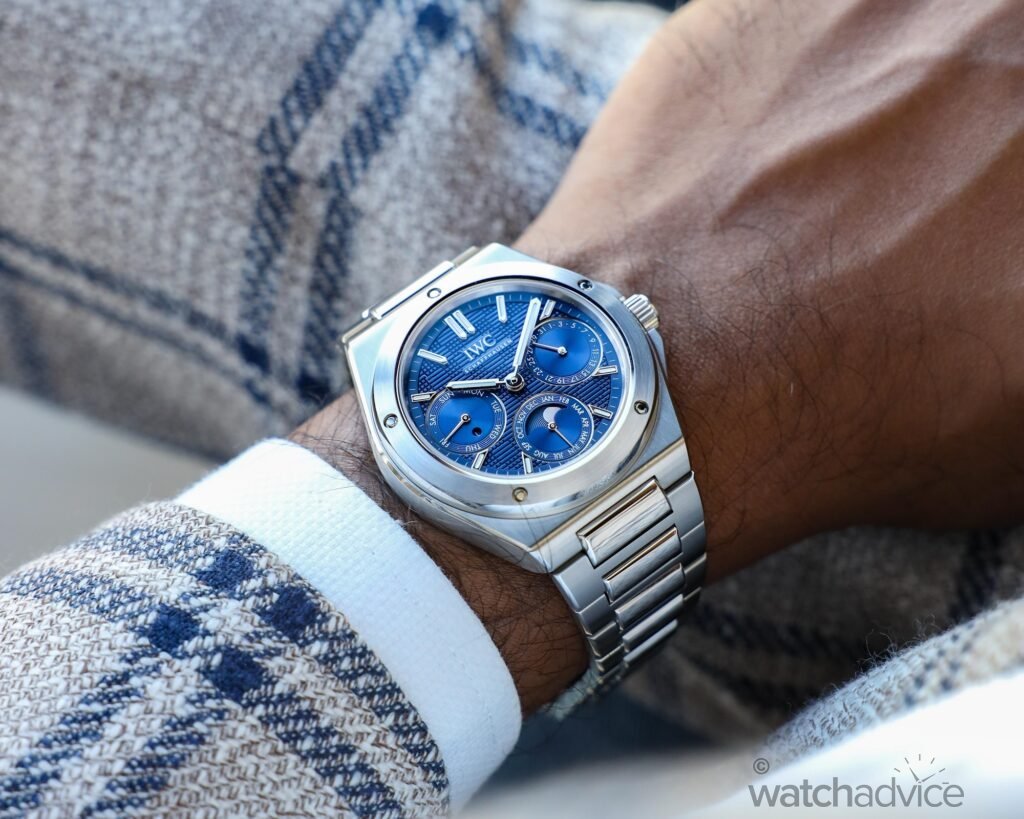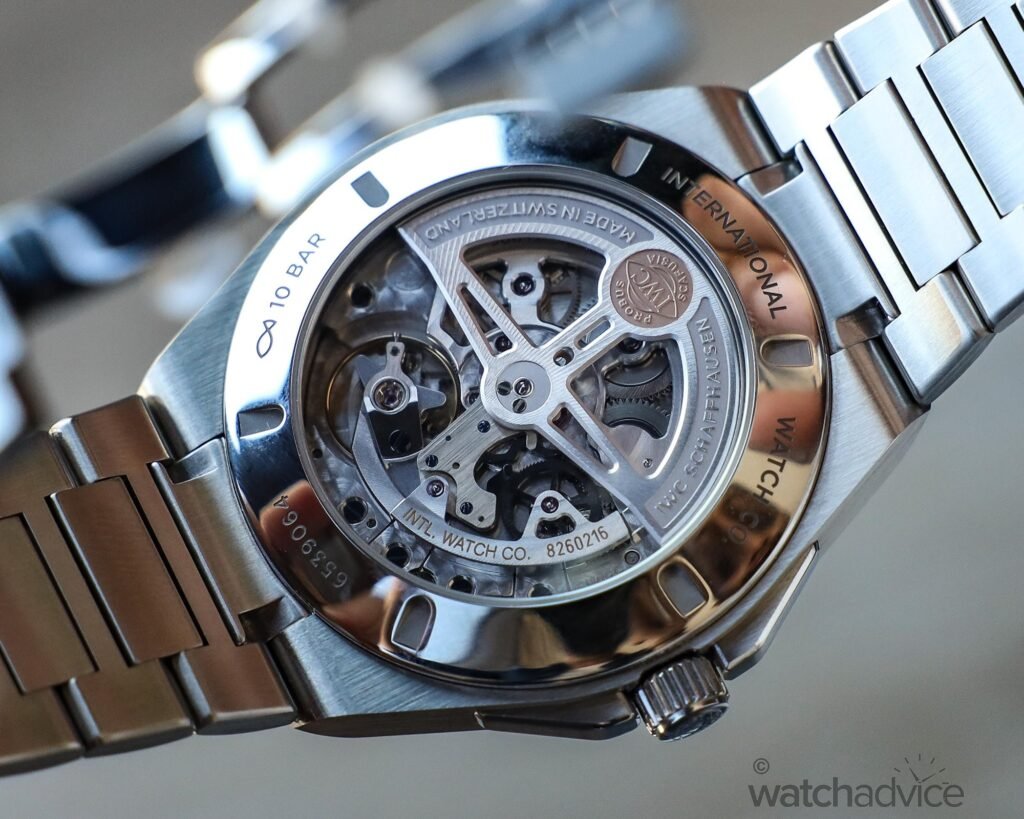For the first time in IWC Schaffhausen’s history, the iconic Ingenieur, originally designed by Gérald Genta, receives the prestigious perpetual calendar complication.
Watches & Wonders 2025 has been quite an exciting one for IWC Schaffhausen enthusiasts, with their Ingenieur collection get a host of updates that are sure to spark heavy interest. What stands out among the latest releases, however, has to be the new Ingenier Perpetual Calendar. This is the first time the Swiss luxury watch manufacturer’s first stainless steel model, designed by Gérald Genta, meets the perpetual calendar complication developed by Kurt Klaus.
The now-iconic Ingenieur timepiece was first introduced by IWC Schaffhausen in 1976, with Gérald Genta taking the reigns in the beautiful shape and design of the model. This was on the back end of Genta’s unveiling of the Audemars Piguet Royal Oak as one of the first steel sports watches on the market, with the octagonal case and bezel design. Some of the design cues were implemented into the new Ingenieur; however, it retained elements that were core to the original 1955 Ingenieur model.
Related Reading: Masters of Time: The IWC Journey Through the Ages
Kurt Klaus, the legendary watchmaker, laid the foundations for many of IWC Schaffhausen’s complications, including the first perpetual calendar complication, which was featured on the Da Vinci model released in 1985. While the perpetual calendar complication found its way into the other collections of IWC Schaffhausen, it was almost 40 years later that it would be seen alongside Gerald Genta’s iconic Ingenieur.
Ingenieur Perpetual Calendar Design:
IWC Schaffhausen is presenting this new Ingenieur Perpetual Calendar in a 41mm stainless steel case. IWC Schaffhausen has remodified the case of the Ingenieur to be able to smoothly integrate the new perpetual calendar movement. The shape and ergonomics of the case have been balanced with the new dial to retain the signature Genta Ingenieur design while still offering a good fit on the wrist.
Another signature design of the Genta Ingenieur is the integrated bracelet, which features H-links that are designed to offer a comfortable and snug fit around the wrist. The case, bezel and integrated bracelet all come with finishes that allow the timepiece to play with light beautifully. The bezel itself features a circular satin-brushed finish, while the case features vertical satin-brushed finishes. The bracelet continues the case’s vertical brushed finish on the H-links of the integrated bracelet, while the middle links feature a polished finish. This allows the middle links to stand out more, which becomes more prominent under light.
One of the aesthetic elements that stands out on the dial is the highly complex “grid” structure. IWC Schaffahsuen states that in regards to the construction of the dial, “In a first step, the characteristic ‘Grid’ and the subdials are applied to the dial base. Consisting of small lines and squares, this unique structure adds additional depth to the dial and reflects the light exquisitely. The counters are treated with a sunray finish, while the outer edges feature a refined azurage. After colouring, the subdials are pad-printed with the calendar display information. The single moon disc, which is visible in the subdial at 6 o’clock, features an intricate azurage finish.”
While this grid structure is certainly not a new feature on the Ingenieur, it presents as the perfect backdrop for the perpetual calendar counters. While you may think that the dial would look busy with the grid-patterned background and perpetual calendar counters, it is anything but. How the sub-dials are laid out with the sunray finished centres provides a break in aesthetic against the grid pattern structure, which means that the counters are easy on the eye and don’t overcomplicate the design. My only drawback with the dial layout, however, is that the counters could be sized a bit smaller. This way, they won’t overlap on the hour indices and minute track. But this might also have drawbacks on its own, as sizing these counters down, even by minute margins, will mean that the sub-dial inscriptions need to be smaller. As these are perpetual calendar counters and not just chronograph counters, this means that, for example, the month inscriptions can get rather messy if miniaturised.
82600 Calibre Movement:
The engine sitting behind IWC Schaffhausen’s latest masterpiece is the IWC-Manufactured 82600 calibre movement. As with IWC movements, the 82600 calibre features a pellaton winding system, which means that the oscillating mass of the movement can swing both ways to efficiently convert movements on the wearer’s arm into potential energy for the mainspring, providing a power reserve of approximately 60 hours.
IWC Schaffhausen also states that “Components that are subject to high stress are made of virtually wear-free zirconium oxide ceramic, one of the hardest materials on Earth. The automatic wheel and the clicks are made of black ceramic, while the rotor bearing is made of white ceramic.”
The 82600 calibre movement powers the calendar information displayed through the sub-counters on the dial, which are the date indication at 3 o’clock sub-counter, month and perpetual moonphase indication at 6 o’clock sub-counter (the moon phase display will only deviate by one day after 577.5 years) and the day of the week indicator on the 9 o’clock sub-counter. The 9 o’clock sub-counter also displays a leap year indicator, which counts down the years until the next leap year. In case of a leap year, the calendar will automatically insert a 29th day at the end of February.
The Ingenieur Perpetual Calendar comes with an open case back, which shows the finishing and complexity of the 82600 calibre movement. What I also love about the movement design outside of the elaborate finishing with circular graining, Geneva stripes and blued screws, is the skeletonised rotor, which has been designed to show IWC’s logo.
Final Thoughts
IWC Schaffhausen brings together modern innovation and heritage with the latest Ingenieur Perpetual Calendar release. The brand has refined the case and bracelet to fit the new perpetual calendar model ensuring a perfect fit on the wrist while maintaining the distinctive Gerald Genta design. The signature grid pattern dial of the Ingenieur, while intricate, provides an beautiful aesthetic background, with the sunray-finished subdials offering a visual break that enhances the readability of the perpetual calendar indicators.
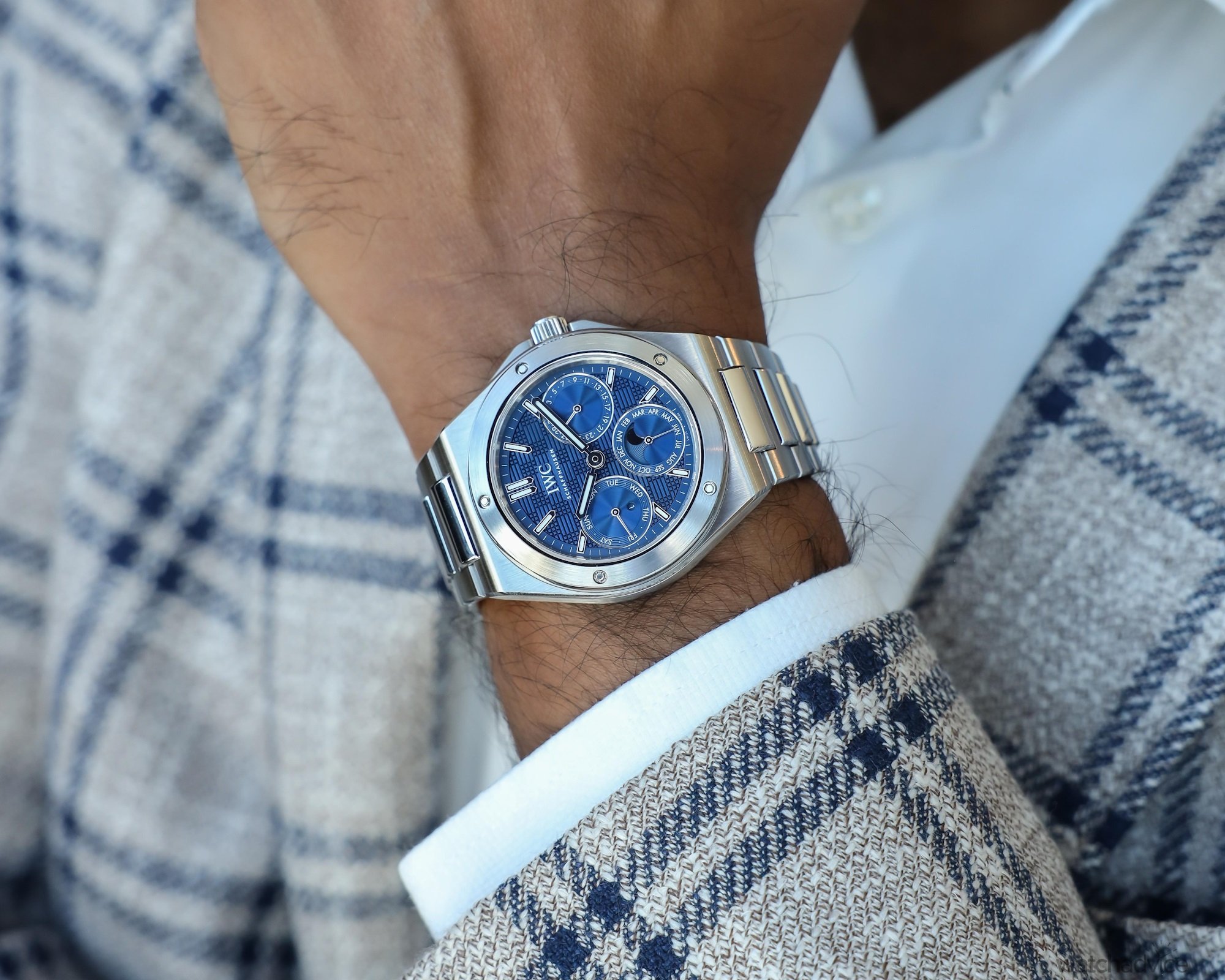
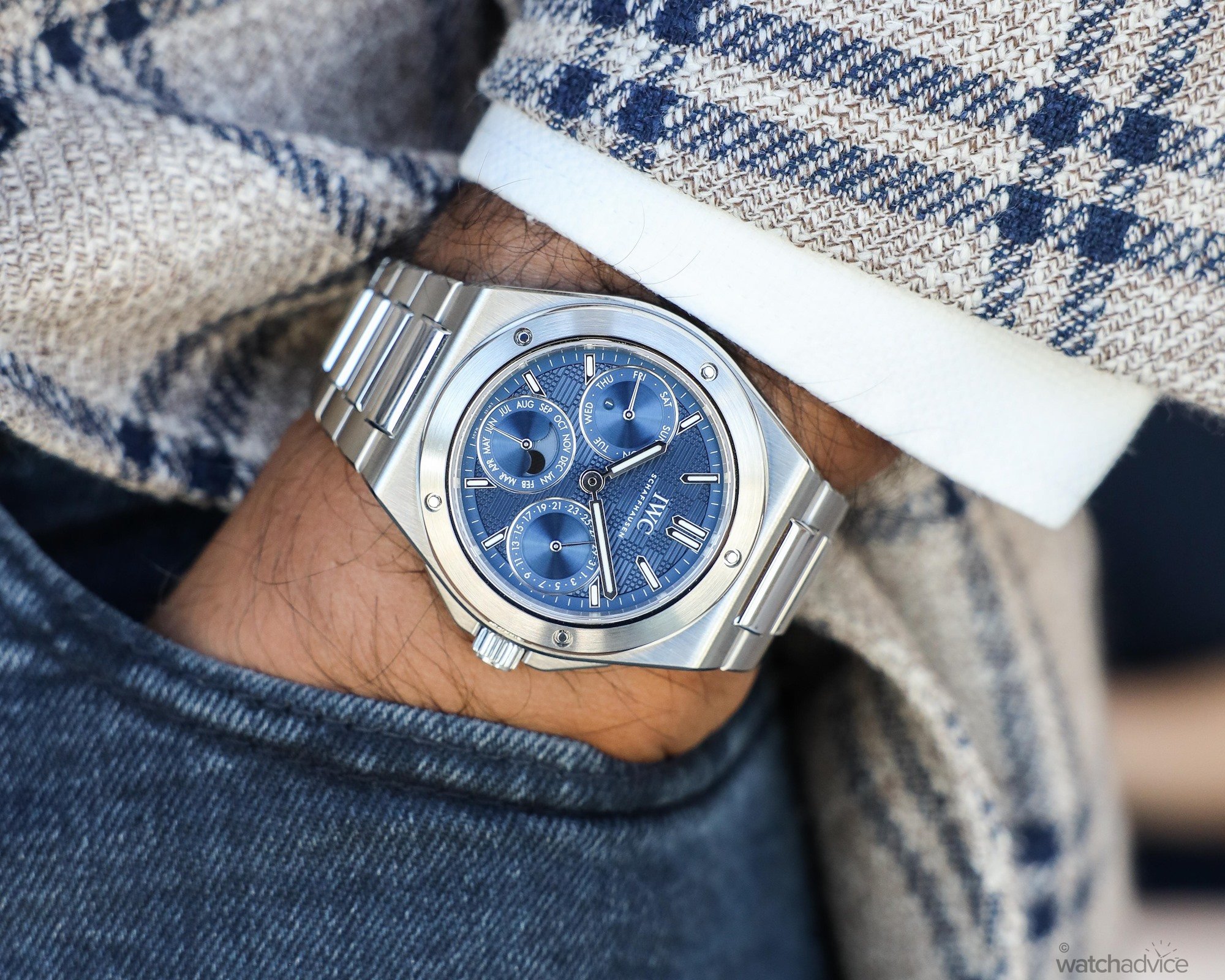
Beyond aesthetics, the technical prowess of the IWC-Manufactured 82600 calibre movement solidifies the new Ingenieur Perpetual Calendar as an exceptional timepiece. The Pellaton winding system, zirconium oxide ceramic components, and an impressive 60-hour power reserve highlight IWC’s commitment to durability and performance. The combination of refined aesthetics and upgraded technical prowess makes this latest Ingenieur a testament to IWC’s ability to merge sophisticated watchmaking with everyday practicality, making it a compelling choice for collectors and enthusiasts alike.
Specifications:
- Dimensions: 41mm, 13.4mm thick
- Case Material: Stainless steel
- Dial: Blue dial with grid pattern. Rhodium-plated hands and hour indices.
- Crystal: Sapphire, convex with anti reflective coating on both sides.
- Water resistance: 100m / 10 Bar
- Movement: IWC-Manufactured calibre 82600
- Power reserve: 60 hours
- Strap: Integrated stainless steel bracelet with butterfly folding clasp.


